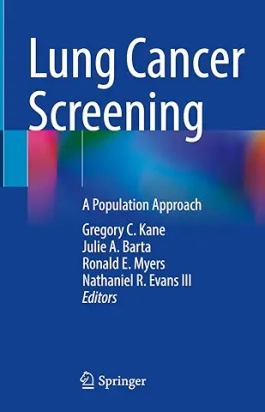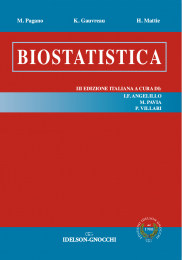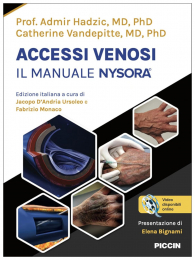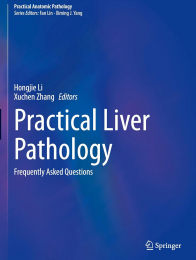Non ci sono recensioni
DA SCONTARE
This book is a comprehensive guide to lung cancer screening for clinicians, healthcare systems, community leaders, and public health officials with the hope of creating a more equitable landscape in both lung cancer screening and lung cancer-related outcomes, at local, state, and national levels. Authors take a new approach to primary and secondary lung cancer prevention that is in the early stages of adoption in the United States. The last decade ushered in recognition of screening as an effective intervention, but unfortunately, despite the wide acceptance of the importance of this new screening modality, nationally, not more than 5% of eligible subjects have undergone screening to date in the United States, although in some states uptake has reached as high as 16%. As is common with any new preventive cancer screening, racial and socioeconomic disparities emerge in utilization, stage at diagnosis, and mortality. Over time, these disparities decline, but consequential differences endure. Therefore, it is critical to establish equitable screening practices.
The true measure of the effectiveness of any lung cancer screening program needs to be viewed through the lens of its impact on populations, including those most affected by the morbidity and mortality of smoking-related illness and lung cancer. As such, this book emphasizes a number of important public health topics, including community outreach to vulnerable populations, social justice issues, addressing stigma and fatalism in the general community, and the use of geocoding to assess a program’s impact at a population level. This book weaves traditional topics related to lung cancer screening, such as promoting initial and repeat screening, interpreting Lung RADs, and managing the follow-up of findings, into the population perspective in order to present a unified, comprehensive approach to the subject. Further, it serves as a guide that health systems, health care professionals, community leaders, and other stakeholders can use to achieve the promise of lung cancer screening.
-
Front Matter
Pages i-xiv
-
Introduction
-
Front Matter
Pages 1-1
-
The Promise of Lung Cancer Screening
- Gregory C. Kane
Pages 3-8
-
A Brief History of Lung Cancer Screening
- Julie A. Barta
Pages 9-14
-
Stigma and Fatalism in Lung Cancer
- Lisa A. Bevilacqua, Nathaniel R. Evans III, Olugbenga Okusanya
Pages 15-24
-
- Melissa DiCarlo, Kristine Pham, Ronald E. Myers
Pages 25-35
-
Smoking Cessation in a Lung Cancer Screening Program
- Brooke Ruane
Pages 37-46
-
Why Health Equity Is So Important in Lung Cancer Screening?
- Gregory C. Kane, Stephen K. Klasko
Pages 47-52
-
-
Applying a Learning Community Model
-
Front Matter
Pages 53-53
-
Engaging a Health System Learning Community to Increase Lung Cancer Screening
- Ronald E. Myers, Melissa DiCarlo, Rickie Brawer, Hee-Soon Juon, Kristine Pham, Christine S. Shusted et al.
Pages 55-66
-
Different Approaches for Offering Lung Cancer Screening
- Humberto Choi, Peter Mazzone
Pages 67-77
-
Enhancing EMR Methods to Identify Patients Eligible for Lung Cancer Screening
- Hee-Soon Juon, Sarah Reed, Ayako Shimada, Jude Francis, Ronald E. Myers
Pages 79-88
-
Primary Care Provider Support and Patient Outreach in Lung Cancer Screening
- Randa Sifri, William Curry, Heather Bittner Fagan, Beth Careyva, Brian Stello, Ronald E. Myers
Pages 89-99
-
Shared Decision Making in the Lung Cancer Screening Context
- Jamie L. Studts, Erin A. Hirsch, Nina A. Thomas, Channing E. Tate, Amy G. Huebschmann, Melissa DiCarlo et al.
Pages 101-116
-
- Sung Whang
Pages 117-122
-
-
Organizing a Quality Program
-
Front Matter
Pages 123-123
-
Organizational Workflow for Lung Cancer Screening
- Teresa Giamboy, Julie A. Barta
Pages 125-132
-
Lung-RADS® and Radiology Reporting Requirements
- Cole Miller, Baskaran Sundaram
Pages 133-144
-
- Brooke Ruane, Debra Dyer
Pages 145-158
-
Leveraging the Electronic Health Record for Continuous Quality
- Bracken Babula
Pages 159-168
-
Organizing a Quality Program
-
- Prarthna Chandar Kulandaisamy
Pages 169-176
-
- Tyler Grenda, Olugbenga Okusanya
Pages 177-181
-
Managing Lung Cancer Screening in a Major Healthcare System
- James H. Finigan, Neha Agarwal
Pages 183-197
-
- Gregory C. Kane
Pages 199-208
-
-
Taking Care of the Patient
-
Front Matter
Pages 209-209
-
- Rickie Brawer, Kristine Pham
Pages 211-226
-
Local Therapy for Early-Stage Lung Cancer
- Nathaniel R. Evans III, Maria Werner-Wasik
Pages 227-234
-
The Revolution of Lung Cancer Therapeutics
- Zachary French, Jennifer Johnson, Rita Axelrod
Pages 235-249
-
-
Engaging the Community
-
Front Matter
Pages 251-251
-
Lung Cancer and Social Justice: What Do I Need to Know?
- Gregory C. Kane, Nathaniel R. Evans III
Pages 253-262
-
Reaching Vulnerable Populations and Areas of Need
- Kristine Pham, Rickie Brawer
Pages 263-274
-
Lung Cancer Myths and How Do I Address Them?
- Brian M. Till, Kathleen Jarrell, Nathaniel R. Evans III
Pages 275-284
-
- Sydney C. Beache, Sandra E. Brooks
Pages 285-293
-
-
Determining Impact at the Population Level
-
Front Matter
Pages 295-295
-
Lung Cancer Screening: Addressing Disparities
- Christine S. Shusted, Gregory C. Kane
Pages 297-306
-
Connecting the Dots: Geocoding and Assessing a Program’s Impact
- Christine S. Shusted, Russell K. Mcintire, Charnita Zeigler-Johnson
Pages 307-328
-
- Patricia M. Doykos, Priscilla L. Ko
Pages 329-335
-
-
On the Horizon: What Lies Ahead in Lung Cancer Screening
-
Front Matter
Pages 337-337
-
Lung Cancer Screening in Health Systems: Needs, Challenges, and Opportunities
- Jennifer Elston Lafata, Christine Neslund-Dudas, Ronald E. Myers
Pages 339-352
-
- Ana Maria Lopez
Pages 353-361
-
On the Horizon: What Lies Ahead in Lung Cancer Screening
-
- Julie A. Barta, Karen E. Knudsen
Pages 363-372
-
Imagining an Equitable Lung Cancer Screening Landscape
- Gregory C. Kane, Julie A. Barta, Nathaniel R. Evans III, Ronald E. Myers
Pages 373-380
-
-
Back Matter
Pages 381-390
-
-





